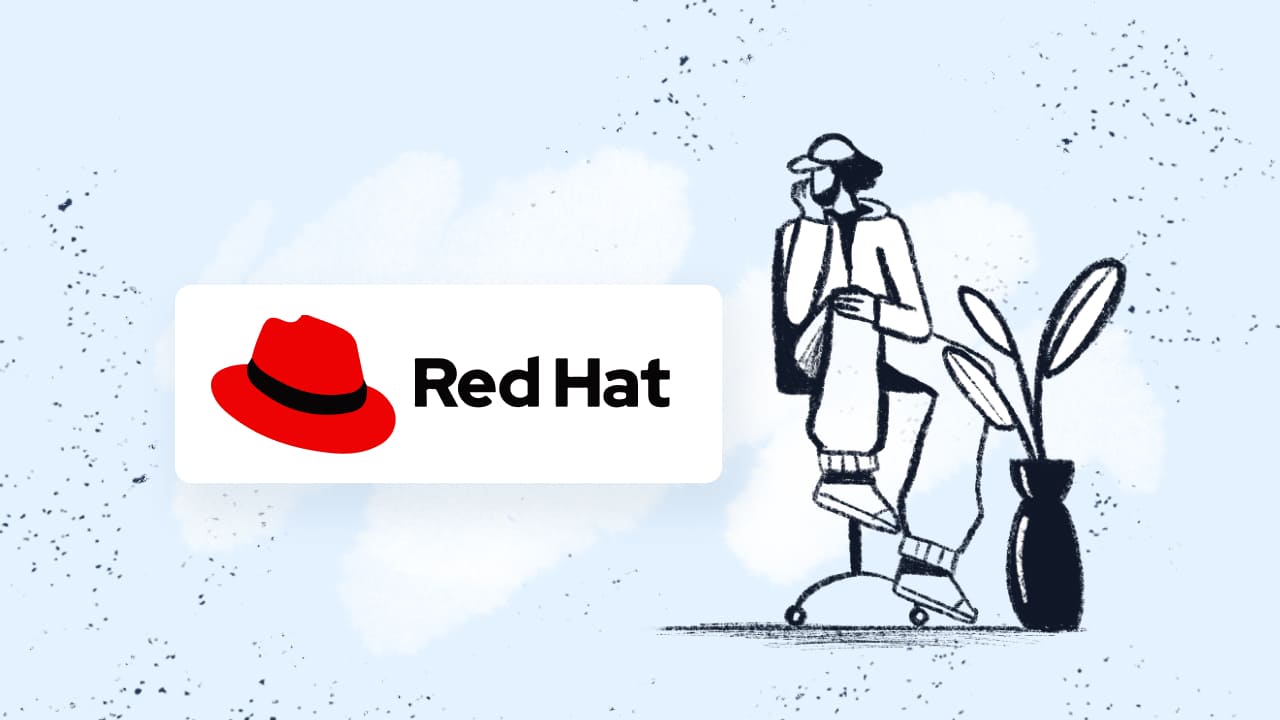Let’s talk Linux Patch Management—a crucial practice in today’s cybersecurity landscape. In 2023, cybercriminals doubled their exploitation of Linux vulnerabilities compared to the previous year, according to Kaspersky. Although there has been a slight decrease in 2024, the trend persists due to the increasing popularity of Linux systems. This growth makes Linux Patch Management more important than ever for businesses of all sizes.
While Linux operating systems are renowned for their stability and security, unpatched systems can quickly become gateways for cyber threats. And with attacks becoming more sophisticated, ignoring Linux Patch Management is simply not an option.
But here’s the good news: with a strong Patch Management strategy, you can protect your systems, reduce security risks, and maintain smooth operations. In this post, we’ll dive into why Linux Patch Management is so important, break down how it works, and share best practices to help you stay ahead of vulnerabilities. Let’s get started!
What is Linux Patch Management?
Linux Patch Management is the process of identifying, testing, and applying updates—or patches—to Linux operating systems, servers, and endpoints. These patches can address a variety of needs, from fixing bugs and vulnerabilities to enhancing performance or introducing new features.
At its core, the goal of Linux Patch Management is to keep your systems secure and running smoothly by ensuring that every component is up to date. This involves a structured patching process that minimizes downtime, avoids compatibility issues, and reduces security risks associated with unpatched systems.
There are many types of Linux patches, from critical security updates to performance improvements. In the next sections, we’ll cover the most common ones and how to manage them effectively.

Types of patches in Linux Patch Management
Patching Linux systems isn’t a one-size-fits-all task. The types of patches you need to apply depend on the specific challenges or goals you’re addressing. Some patches are critical for security, others ensure your system operates without bugs, and some even unlock new features or enhance performance.
Below, we’ll break down the most common types of patches in Linux Patch Management, explaining their purpose and why they matter. Understanding these categories will help you prioritize and streamline your patching process.
#1: Security patches
These are designed to fix vulnerabilities that could be exploited by attackers. Security patches are high-priority because they directly protect your Linux systems from threats and reduce the risk of breaches.
#2: Bug fixes
Bug fix patches address issues that cause software or system instability. They don’t necessarily pose a security risk but are crucial for ensuring reliability and smooth operations.
#3: Feature updates
Feature updates introduce new functionalities or enhance existing ones. While these patches might not be critical, they can improve user experience and system capabilities.
#4: Kernel patches
These focus specifically on updating the Linux kernel, which is the backbone of the operating system. Kernel patches can:
- Fix critical bugs or vulnerabilities.
- Improve performance and stability.
- Include live kernel patching, which applies updates without requiring a system reboot.
#5: Performance patches
Performance patches optimize your system’s efficiency, whether it’s improving speed, memory usage, or resource allocation. These updates ensure Linux systems run as smoothly as possible.
#6: Application-specific patches
These patches update software running on Linux systems. They ensure compatibility with the operating system and other tools while addressing issues specific to the application.
#7: Version upgrades
A larger-scale patch, version upgrades move your system or applications to a new version. They often combine multiple fixes, security updates, and new features into one package.

Why do you need Linux Patch Management?
Linux systems are often praised for their stability and security, but that doesn’t mean they’re maintenance-free. Like any other operating system, Linux requires regular updates to stay secure, efficient, and compatible with new technologies.
In fact, the benefits of Linux Patch Management are quite similar to those of patching any OS—protecting your systems, reducing downtime, and keeping things running smoothly. Let’s take a closer look at the key benefits of Linux Patch Management.
1. Enhanced security
Every unpatched vulnerability is a potential door for attackers. Linux Patch Management ensures you’re applying critical security patches that protect your systems from exploits, malware, and data breaches.
2. Improved system stability
Patching isn’t just about security—it’s also about reliability. Bug fixes included in updates prevent crashes, glitches, and other issues that could disrupt your operations.
3. Compatibility with modern technologies
As software and hardware evolve, your systems need to keep up. Regular patches ensure your Linux operating systems remain compatible with new applications, devices, and industry standards.
4. Better performance
Performance-focused patches help Linux systems run faster and more efficiently, optimizing resource usage and improving overall user experience.
5. Simplified compliance
Many industries require systems to meet specific security standards. Regular patching helps maintain compliance with regulations, audits, and best practices, reducing risks and keeping you out of trouble.
6. Reduced long-term costs
Addressing vulnerabilities proactively through patching is far more cost-effective than dealing with a data breach, ransomware attack, or prolonged downtime. It’s an investment that saves money in the long run.

Key Linux patching challenges
Linux Patch Management may share similarities with other operating systems, but it also comes with its own unique set of challenges. From the sheer variety of distributions to managing open-source components, keeping Linux systems patched and secure isn’t always straightforward.
Let’s break down some of the main challenges that make Linux patching a bit more complex.
1. Wide variety of Linux distributions
Unlike other operating systems with a centralized update mechanism, Linux comes in many flavors—Ubuntu, Red Hat Enterprise Linux, SUSE Linux Enterprise, Oracle Linux, and more. Each distribution has its own patching process, tools, and repositories, which can complicate Patch Management in diverse environments.

2. Open-source components
Linux systems often rely on open-source software, which may not have a centralized team monitoring and releasing patches. This means system administrators must track updates from multiple sources, increasing the chances of missing critical patches.
3. Decentralized environments
In large organizations, Linux servers and endpoints are often spread across different geographies and configurations. Managing patches for such decentralized setups requires careful planning and robust tools to ensure no system is left behind.
4. Dependency management
Linux patches sometimes come with dependency requirements that can lead to conflicts or even system instability if not handled correctly. Understanding and managing these dependencies is critical to a smooth patching process.
5. Live kernel patching complexity
While live kernel patching (updating the Linux kernel without a reboot) is a powerful feature, it’s not always straightforward to implement. Administrators need the right tools and expertise to avoid downtime while ensuring the patches are applied correctly.
6. Lack of standardization across tools
Different Linux distributions often require different Patch Management tools and commands. For example, what works for Red Hat systems (like yum or dnf) won’t apply to Debian-based distributions that use apt. This lack of standardization can be challenging for IT teams managing multi-distribution environments.
7. Vendor-specific support timelines
Not all Linux vendors support their distributions for the same length of time. Some offer long-term support (LTS), while others have shorter cycles, forcing organizations to plan and execute upgrades more frequently than they might for other operating systems.
How to patch a Linux system?
Patching a Linux system is a critical task for maintaining security, stability, and performance. This guide is designed for system administrators, IT professionals, and patch managers responsible for keeping Linux environments up to date. It assumes familiarity with Linux systems and command-line tools.
If you’re an end-user, your Linux distribution likely provides automated or GUI-based tools to handle updates (like Ubuntu’s Software Updater). However, for professionals managing larger systems or multiple distributions, here’s a detailed breakdown of the patching process.
Step 1: Check for available updates
The first step in Linux patching is identifying what updates are available. Use your distribution’s package manager to fetch the latest updates from official repositories.
For Ubuntu/Debian-based systems:
Run the following command:
.png?width=680&height=113&name=carbon%20(5).png)
This command retrieves the list of available updates, including software packages, kernel updates, and security patches.
For Red Hat/CentOS-based systems, use:
Or, for newer versions:
For SUSE-based systems, run:
Review the output to understand which updates are available and their purpose (e.g., security, bug fixes, feature enhancements).
Step 2: Review the updates
Not all updates need to be applied immediately. Evaluate the list to determine:
- Criticality: Focus on applying security patches first, especially for known vulnerabilities.
- Impact: Check if the updates affect critical services or require configuration changes.
- Dependencies: Some updates may have dependencies that need to be resolved to avoid conflicts.
Step 3: Backup your system
Before applying updates, it’s essential to create a backup. This ensures you can recover your system if something goes wrong during the patching process.
- For virtual machines: Take a snapshot using your hypervisor (e.g., VMware, VirtualBox, or Hyper-V).
- For physical systems: Use tools like rsync or tar to back up important files and configurations:
.png?width=680&height=113&name=carbon%20(9).png)
- Database backups: Use database-specific tools (e.g., mysqldump for MySQL).
Step 4: Test updates in a staging environment
Before applying updates to production systems, test them in a staging environment:
- Use a similar setup to your production environment to replicate potential issues.
- Apply the updates and monitor for any compatibility problems, performance issues, or failed installations.
Testing minimizes the risk of disruptions in critical systems.
Step 5: Apply the updates
Once updates are tested and approved, proceed to apply them in production. The commands vary based on the distribution:
-
Ubuntu/Debian:
.png?width=680&height=113&name=carbon%20(10).png)
For major updates that involve system-wide changes, use:
.png?width=680&height=94&name=carbon%20(11).png)
-
Red Hat/CentOS:
.png?width=680&height=94&name=carbon%20(12).png)
Or, with newer tools:
.png?width=680&height=94&name=carbon%20(13).png)
-
SUSE:
.png?width=680&height=94&name=carbon%20(14).png)
For kernel updates:
- Many require a system reboot to take effect.
- Consider using live kernel patching tools like kpatch or livepatch to apply updates without rebooting.
Step 6: Verify the updates
After the updates are applied, confirm their success:
-
Check system logs: Review /var/log for errors during the update process.
-
Verify kernel updates, run:
.png?width=680&height=94&name=carbon%20(15).png)
This command displays the current kernel version to ensure it matches the updated version.
- Test critical services: Ensure applications, databases, and other services are running as expected.
Step 7: Monitor for issues
Even after successful patching, continue monitoring the system for:
- Errors or warnings in logs.
- Performance issues caused by the updates.
- Compatibility problems with third-party applications.
Set up automated monitoring tools to alert you to any anomalies.
How to Patch a Linux system with Linux Patch Management Software?
When it comes to managing Linux patches, relying on dedicated Linux Patch Management software is a smart move—especially for organizations dealing with multiple systems, diverse distributions, or enterprise-scale environments. These tools are designed to streamline the patching process, automate repetitive tasks, and provide greater visibility and control over your Linux systems.
Why is this important? While manual patching gives you full control, it can be time-consuming and prone to errors, particularly in large or decentralized environments. Patch Management software simplifies the process by:
- Centralizing updates across multiple Linux distributions.
- Automating tasks like update checks, deployment, and reporting.
- Minimizing downtime with features like live patching.
- Providing real-time insights into the patch status of all your Linux systems.
Patch Management for Linux best practices
Managing patches for Linux systems comes with unique challenges, from dealing with diverse distributions to addressing dependency conflicts. To make the process as seamless and effective as possible, it’s important to follow tailored best practices specifically designed for Linux environments.
In this section, we’ll explore five key best practices for Linux Patch Management. These strategies will help you maintain secure, stable, and efficient systems while minimizing downtime and reducing risks.
1. Regularly audit your Linux systems
The first step in effective Patch Management is understanding your environment. Conduct regular audits to get a complete picture of your Linux systems, including:
- The distributions and versions in use (e.g., Ubuntu, Red Hat Enterprise Linux, SUSE Linux Enterprise).
- The software packages installed and their update status.
- The hardware configurations and their compatibility with updates.
Use tools like lsb_release -a to identify the OS version or leverage automated inventory tools for enterprise-scale environments. Audits ensure that you’re aware of vulnerabilities, out-of-date packages, and systems requiring urgent attention.
2. Prioritize security updates
Not all patches are created equal. While bug fixes and feature enhancements are important, security patches should always take priority. These updates address vulnerabilities that can be exploited by attackers, protecting your systems from breaches and malware.
- Subscribe to vendor security advisories (e.g., Ubuntu Security Notices or Red Hat Security Updates) to stay informed about critical updates.
- Automate the application of high-priority patches when possible to minimize delays.
For example, configure unattended upgrades in Ubuntu to handle critical security patches automatically:
3. Use a staging environment
Testing patches in a staging environment before deploying them to production is crucial in Linux Patch Management. Staging environments mimic your live systems, allowing you to:
- Identify compatibility issues or performance impacts caused by the patch.
- Test kernel updates without risking downtime in production.
For example:
- Set up a virtualized environment using tools like VMware or VirtualBox.
- Clone production systems to create an accurate testing replica.
Testing patches minimizes the risk of disruptions, particularly in enterprise environments with critical applications.
4. Implement live lernel patching
Linux has a powerful feature: live kernel patching, which allows you to apply kernel updates without rebooting. This is particularly useful for systems requiring high availability, like servers or enterprise environments.
-
Use tools like livepatch (Ubuntu) or kpatch (Red Hat) to apply live patches:
.png?width=680&height=150&name=carbon%20(18).png)
- Live patching reduces downtime and ensures your system remains secure while in use.
However, remember that not all updates support live patching, so you may still need occasional reboots for major kernel changes.
5. Monitor and report patch status
Visibility is critical for effective Linux Patch Management. Continuously monitor the patch status of your systems to ensure updates are applied and identify any failed installations. Use tools or scripts to:
- Generate reports on the patch level of your systems.
- Alert you to unpatched vulnerabilities or systems falling behind on updates.
For example:
- Use apt list --upgradable in Ubuntu to see pending updates.
- For enterprise environments, rely on centralized monitoring tools that support detailed reporting.
Monitoring helps you stay proactive, ensuring no system is left exposed due to missed updates or patch failures.
Conclusion
Linux Patch Management is essential for maintaining secure, stable, and high-performing systems. By addressing vulnerabilities, optimizing performance, and ensuring compatibility with modern technologies, patching protects your Linux environments from growing cybersecurity threats.
Key takeaways:
- Understand your environment: Regularly audit your Linux systems to stay informed about their status and update needs.
- Prioritize security: Focus on critical patches to safeguard against exploits.
- Leverage tools and automation: Simplify patching with dedicated Linux Patch Management software for efficiency and scalability.
- Test before deploying: Use a staging environment to avoid disruptions.
- Monitor and improve: Continuously track patch status and refine your strategy.
By implementing these best practices and using the right tools, you’ll stay ahead of vulnerabilities and keep your Linux systems running smoothly. Now’s the time to patch things up—literally!













.png?width=680&height=113&name=carbon%20(6).png)
.png?width=680&height=113&name=carbon%20(7).png)
.png?width=680&height=113&name=carbon%20(8).png)
.png?width=680&height=150&name=carbon%20(17).png)


